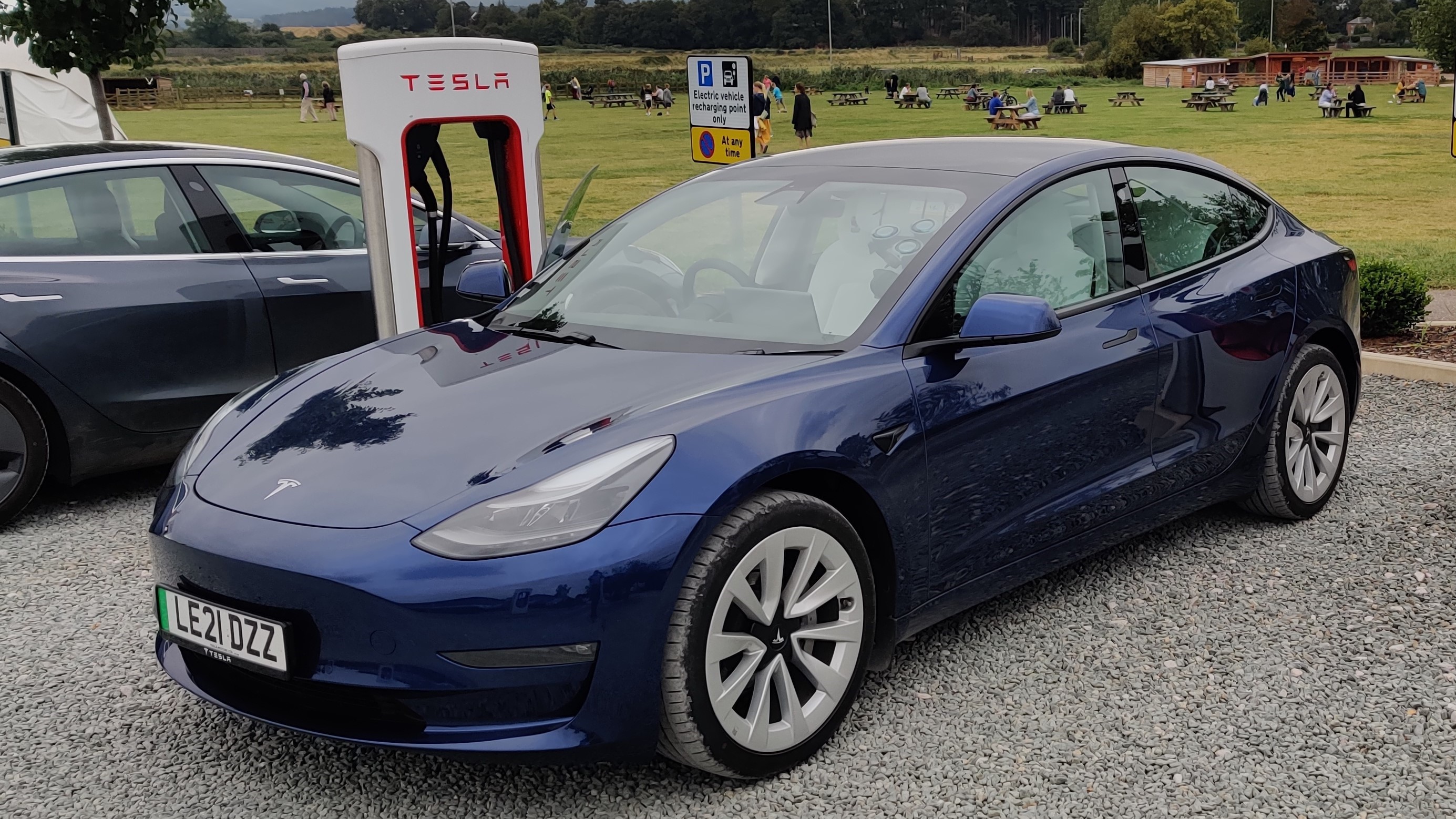Hey Rivian, exclusive charging points are a horrible idea — and even Tesla sees that
Rivian's Adventure Network will be 'initially' exclusive to its own cars, which is a terrible idea

It won’t be long before the first Rivian R1T electric trucks start hitting the road, and in anticipation of that launch, the EV startup has been revealing certain key details about what’s to come. And the Rivian Adventure Network (RAN) — its network of EV charging stations — is the latest to be showcased.
According to Rivian there will be more than 3,500 charging stations by the end of 2023 — across 600 sites. However, these chargers are going to be exclusive to Rivian drivers “initially." Frankly that’s the wrong attitude to have, and EV makers should be focusing on inclusivity rather than littering the country with chargers only a handful of drivers can use.
- Everything you need to know about the Rivian R1T
- Here are the best electric cars you can buy right now
- Plus: At $39k the Tesla Cybertruck will be Tesla's cheapest EV — how did that happen?
According to Rivian, the RAN will come with a number of key advantages over other electric car charging networks. Rivian vehicles will have automatic charging, meaning you can plug in and not fiddle with any apps or payment screens to start topping up. The in-car navigation can plot charging points along your route, much like Tesla Superchargers.
RAN stations will also support up to 300kW DC charging speeds, though the R1T and R1S will only be able to handle 200kW speeds. However, it’s also confirmed that these chargers will initially be Rivian exclusives, meaning no other cars will be able to use them. This doesn’t seem like it’ll be the case forever, since Rivian also confirms that it will offer special rates to Rivian drivers later on.
Rivian will install around 10,000 Rivian ‘Waypoints’ by 2023, which will offer AC charging up to 11.5kW speeds. These points will apparently be available for all EV drivers from the get go. However, since they are not rapid chargers, they are only going to be able to offer a fraction of the charging power that the RAN DC chargers will have to offer.
Electric cars need open infrastructure
While I don’t have an issue with extra conveniences for Rivian owners, especially discounted rates, I do take issue with the fact the chargers are going to be exclusive for an unspecified period. It’s the absolute wrong way to go about rolling out electric car charging infrastructure.
Despite all the advances in battery tech and electric car performance, some people do still have concerns about electric cars. Especially where range and recharging are concerned. The key way to alleviate those concerns, despite extending range as much as possible, is to ensure there are plenty of places to recharge — and quickly.
Not only does that mean building more charging points, particularly in areas without much EV charging infrastructure, it means making sure people can actually plug into whichever one they come across.
In other words, we shouldn’t be building any charging points that can’t be utilized by everyone. Even if there certain special perks are only available for particular cars, at the very least every EV should be able to pull up, start rapid charging, and be on their way fuss-free.
And since Rivian uses the same CCS charger as almost every other electric car, there’s absolutely no reason why that shouldn’t be possible from day one.
What about other charging networks?

While charging points often have their own individual restrictions for access, and how long you can stay to recharge, it doesn’t matter what car you actually own. Just as long as you have the right charging port for the available cables. Just turn up, plug in, and follow the instructions on the charging point (or in the companion app) to get going.
But then we have Tesla, which is probably the best example of an exclusive charging network, since Tesla Superchargers are only compatible with Tesla cars. In the U.S. that’s bolstered by the fact Tesla uses a proprietary charging port rather than the CCS standard most other carmakers use.
But even if another car were able to plug in, which could happen in Europe where Tesla cars are equipped with CCS ports, software prevents the Supercharger from releasing any power.
In Tesla’s case, the fact the Supercharger network maintains that level of exclusivity is somewhat understandable. Back when Tesla launched, long-range electric cars and rapid charging systems were basically unheard of.
So the company had to invest in the Supercharging network, and a new charging port capable of handling those speeds, or Teslas would have missed out on one of their key selling points.
But that was almost ten years ago when electric cars were still a novelty. These days there are countless different EV models on the roads, and they all need to be able to charge up somewhere. The real question isn’t why Tesla Superchargers are exclusive, but why they’re still exclusive — especially in Europe where Tesla uses the same CCS charging standard as everyone else.
Times are changing
But that is apparently changing, according to Elon Musk. Spurred on by the prospect of government incentives in Norway, Tesla will apparently start letting the first non-Teslas use the Supercharger network before the end of the year.
According to Musk that will eventually roll out to every country Superchargers are available, and will work in a similar fashion to other third party charging networks — i.e. with payment and charging sessions confirms in the Tesla app.
If feel this is the obvious right thing to do. If electric cars are going to be ubiquitous, drivers are going to need to take advantage of every charging station. And that goes both ways.
In the same way that non-Teslas should be able to use the Supercharger network, Teslas in the U.S. should be able to plug into other charging stations — ideally without needing expensive adapters to facilitate it.
After all that’s how it works for gas stations, which have been going pretty well for decades. And if electric car makers really want a smooth transition from gas to electric, they need to do everything they can to make the recharge experience as seamless and convenient as filling up a gas tank.
With all that in mind, it’s a step backwards for someone like Rivian to come in and not offer more inclusive rapid charging options. Having the AC Waypoints on offer is a nice idea, but the speeds on offer aren’t much use if you need a serious top-up. Let’s just hope Rivian figures that out and decided to end exclusivity earlier that forecasted.
- More: Rivian R1T vs Tesla Cybertruck: Which electric truck is right for you?
Sign up to get the BEST of Tom's Guide direct to your inbox.
Get instant access to breaking news, the hottest reviews, great deals and helpful tips.

Tom is the Tom's Guide's UK Phones Editor, tackling the latest smartphone news and vocally expressing his opinions about upcoming features or changes. It's long way from his days as editor of Gizmodo UK, when pretty much everything was on the table. He’s usually found trying to squeeze another giant Lego set onto the shelf, draining very large cups of coffee, or complaining about how terrible his Smart TV is.
